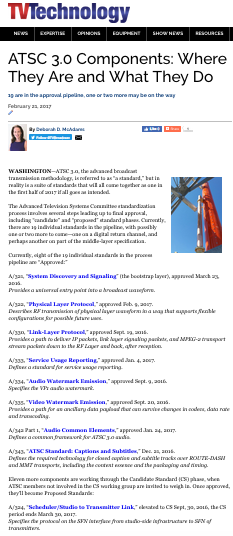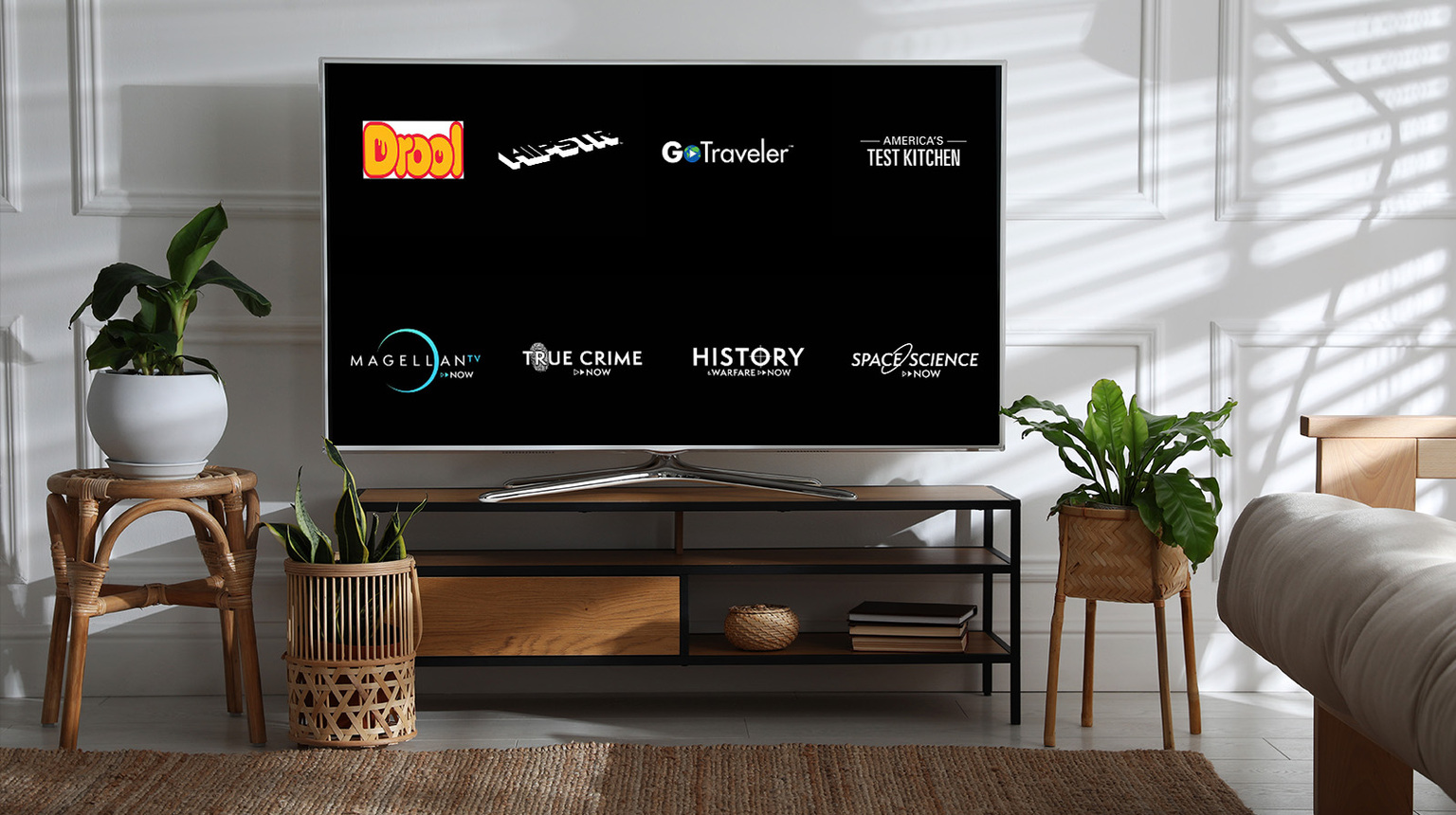FCC Greenlights ATSC 3.0
WASHINGTON—The Federal Communications Commission today voted unanimously to allow broadcasters to voluntarily deploy the emerging “next-generation” television transmission standard known as ATSC 3.0. (See the component standards comprising ATSC 3.0 in the pop-out sidebar at right.)
“Imagine a world in which TV broadcasts of your favorite show or new programs were delivered in Ultra High Definition and immersive audio. Imagine a world in which programming was hyperlocalized and broadcasters could delivery niche content to specific geographic areas within a station's signal areas. Imagine a world that offered Americans with disabilities far better accessibility options for experiencing broadcast television. Imagine a world in which every consumer smartphone could serve as an over-the-air programming device,” said Chairman Ajit Pai in his prepared statement, enumerating a few of the capabilities of ATSC 3.0.
FCC Commissioner Mignon Clyburn said she supported the proposal, but that she still had questions about the transition to ATSC 3.0, including how small stations that don’t adopt 3.0 would be affected, as well as the cost to consumers, since there will be no converter-box subsidy like the one implemented in the 2006 digital transition.
“What this proposed rulemaking makes clear is that plenty of outstanding questions remain, particularly as it relates to consumers, pay TV providers, as well as broadcasters who chose not to upgrade to the new standard,” she said.
The vote was in response to an April, 13, 2016, petition by broadcast and consumer electronics lobbies that broadcasters be allowed to adopt and deploy ATSC 3.0 on a voluntary and market-driven basis. Petitioners’s requested approval for just the foundational components of standard, which now comprises 19 individual component standards with possibly one or two more on the way.
The commission’s Feb. 2 ATSC 3.0 Notice of Proposed Rulemaking, voted on today, was limited to A/321, “System Discovery and Signaling,” aka the bootstrap layer, which provides a universal entry point for the signal into the broadcast waveform, like the door on a Metro bus picking up passengers. The commission also approved A/322, “Physical Layer Protocol,” which describes the radio frequency transmission of physical layer waveform in a way that supports flexible configurations for possible future uses, i.e., stuff no one has thought of yet that might be achievable over a broadcast infrastructure with a technology that hasn't yet been invented.
Today’s vote was just the start, as the NPRM remains open for comment, but it frees up broadcasters to retrofit facilities for 3.0 during the upcoming post-incentive auction channel repack.
Dennis Wharton, executive vice president of communications for the National Association of Broadcasters—one of the petitioners—offered the following statement
��NAB commends the FCC and Chairman Pai for taking the first step towards approving the voluntary adoption of next-gen TV. This innovative broadcast transmission standard offers free and local TV viewers the promise of higher-quality pictures and sound, mobile viewership, datacasting and lifesaving interactive emergency information. With support from television manufacturers, public TV stations and the public safety community, NAB looks forward to next-gen TV’s giant leap into broadcasting’s bright future.”
Jerald Fritz, executive vice president of ONE Media, the subsidiary created by Sinclair Broadcast Group to develop and deploy ATSC 3.0, provided the following response to the FCC vote:
“We’re delighted that the commission has begun the formal process of approving use of this revolutionary capacity for broadcasters with the significant commitment of Chairman Pai to move quickly to final rules. The opportunities opened are immense, and we’d like to begin providing these enhanced services to our viewers as quickly as possible. The convergence of next-gen deployment and the broadcast station repack marks both a practical and strategic relaunch of the broadcast business model.”
For more TV Technology coverage, see our ATSC 3.0 silo. In particular check out “FCC@3.0: OET-69, Public Interest, Yes; Tuner Edict, No,” Feb. 2, 2017, which outlines the bullet points of the NPRM, and “HPA 2017: ATSC 3.0 Update, “ Feb. 21, 2107 for the latest information on the standard.

Get the TV Tech Newsletter
The professional video industry's #1 source for news, trends and product and tech information. Sign up below.
